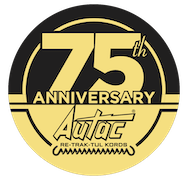The telephone coil cord, often referred to as a curly cord or handset cord, is one of the most essential yet underappreciated components in traditional landline telephony. Despite the advent of wireless communication, coil cords are still widely used in office environments, call centers, homes, and industrial settings where reliable and consistent communication is crucial. This article explores the telephone coil cord in detail, discussing its design, functionality, materials, technical specifications, applications, maintenance, and the impact of evolving communication technologies on its use.
1. Introduction To Coil Cords
A Coil Cord For Telephone is the flexible, spiral-shaped cord that connects the telephone base to the handset. Its distinctive coiled design allows it to extend and retract, giving users the freedom to move the handset away from the base without the cord becoming tangled or creating slack on the floor. The cord serves as both a physical and electrical link, transmitting audio signals between the microphone and speaker in the handset and the internal circuitry of the telephone base.
Although many consumers now use cordless and mobile phones, coil cords remain essential in scenarios requiring durable, dependable connections without wireless interference.
2. Design And Construction
The defining characteristic of a Coil Cord For Telephone is its spiral or helical structure, which gives it elasticity and compactness. This design provides several benefits:
- Space Efficiency: The cord stays neatly coiled, minimizing clutter and saving desk space.
- Flexibility and Reach: It stretches easily when pulled, providing extended reach without excess slack.
- Tangle Resistance: The coil design helps prevent the cord from tangling during use.
Key Components:
- Conductors: Typically made of copper for optimal electrical conductivity.
- Insulation: Each wire is coated with an insulating material (often PVC) to prevent short circuits.
- Outer Jacket: The entire bundle is enclosed in a flexible but durable outer sheath.
- Connectors: Standard RJ9 (or RJ10/RJ22) connectors are crimped on both ends for plug-and-play use with telephones.
3. Materials Used
Quality coil cords are constructed using materials that balance durability, flexibility, and cost:
- Copper Wires: Oxygen-free copper is commonly used for high signal quality.
- PVC (Polyvinyl Chloride): Often used for insulation and the outer jacket due to its flexibility and cost-effectiveness.
- TPU (Thermoplastic Polyurethane): A premium material choice that offers better abrasion resistance and longevity than PVC.
Some cords are shielded with aluminum foil or braided shielding to reduce electromagnetic interference (EMI), particularly in sensitive environments.
4. Technical Specifications
While specifications may vary by manufacturer or application, most standard telephone coil cords follow certain norms:
| Specification | Typical Value |
|---|---|
| Length (coiled) | 12 inches to 25 feet |
| Length (extended) | Up to 12–15 feet when stretched |
| Number of Conductors | 2, 4, or 6 depending on function |
| Connector Type | RJ9 (4P4C), sometimes RJ10 or RJ22 |
| Color Options | Black, ivory, gray, white |
Different cord lengths are used depending on the workspace. Longer cords offer more movement freedom but are more prone to tangling and wear.
5. Applications And Usage
The coil cord is commonly found in the following environments:
- Office Telephony: Desktop phones in corporate environments often use coiled cords for clarity and call comfort.
- Call Centers: High usage demands durability and flexibility to avoid downtime.
- Medical Facilities: In clinics and hospitals, coil cords are preferred due to their reliability and lack of interference with sensitive equipment.
- Industrial Settings: Rugged versions are used in factories and control rooms where ambient noise or movement requires robust communication tools.
- Home Phones: Many corded landline phones in households still use coil cords for security and cost-effectiveness.
In specialized applications, such as aviation or military communication systems, custom-designed coil cords may be employed to meet unique durability and signal fidelity requirements.
6. Advantages Of Telephone Coil Cords
Despite being a relatively simple device, the coil cord offers several practical advantages:
- Durability: Coil cords are built to withstand repeated stretching and coiling.
- Consistent Audio Quality: Wired transmission ensures minimal signal loss or distortion.
- Cost-Efficiency: Significantly less expensive than wireless systems, especially in bulk setups.
- No Battery Dependence: Unlike cordless phones, corded handsets with coil cords function without power interruptions.
7. Common Issues And Maintenance Tips
Over time, coil cords can develop problems due to frequent use. Common issues include:
- Tangling: Despite their design, cords can become tangled if overstretched or twisted in one direction repeatedly.
- Coil Memory Loss: Extended use may cause the coil to lose elasticity and fail to retract properly.
- Crackling or No Sound: Worn-out internal wiring can disrupt signal transmission.
Maintenance Tips:
- Avoid Overstretching: Do not pull the cord beyond its intended extension.
- Periodic Rotation: Occasionally reversing the orientation helps reduce permanent twisting.
- Cleaning: Use a damp cloth to remove dust and debris, especially in high-traffic or dusty areas.
- Replace Damaged Cords: Cords with visible cuts, fraying, or audio issues should be replaced immediately.
8. Modern Alternatives And Future Outlook
While coil cords remain in use, technology has introduced alternatives:
- Wireless Headsets: Bluetooth and DECT headsets offer mobility without cords.
- VoIP Phones: Often support both wired and wireless peripherals.
- USB and Audio Jack Cables: In modern hybrid phone systems or conference devices, USB-based coiled cables can also be used.
Nevertheless, many organizations continue to prefer coil cords for their simplicity, security, and no-lag connectivity. In critical sectors like healthcare, finance, and law enforcement, wired solutions are still regarded as more reliable and secure.
Looking ahead, the coil cord may evolve in material composition and hybrid integration (e.g., combining audio and data transmission), but its core design is unlikely to change due to its practicality and effectiveness.
9. Conclusion
The telephone coil cord may seem like a relic of the past in a wireless age, but its utility and reliability ensure it remains relevant in many modern applications. From its thoughtful design and materials to its everyday use in various sectors, the coil cord exemplifies engineering simplicity with functional elegance. For businesses and users who prioritize durability, clear audio, and simplicity, the humble coil cord remains a small yet vital component of effective communication systems.
Whether you’re setting up a call center, replacing a worn-out handset cord, or simply curious about telephony infrastructure, understanding the telephone coil cord helps appreciate the unsung heroes behind smooth and secure communication.




Recent Comments